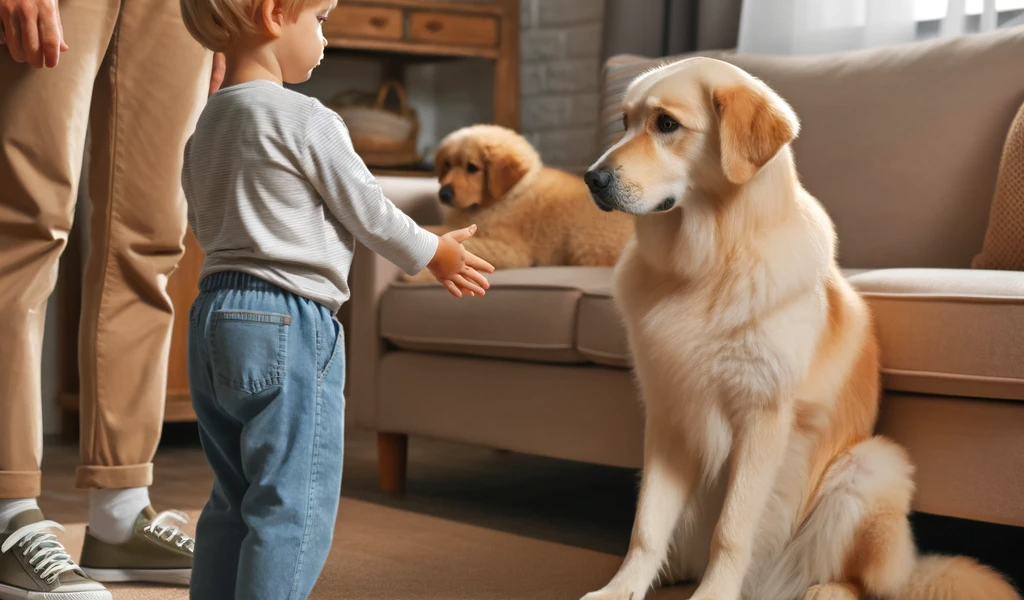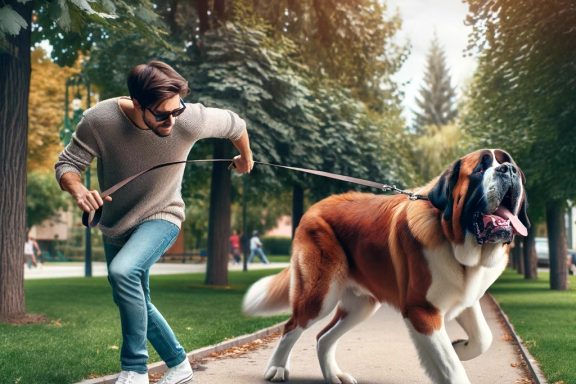Introducing a new canine companion into your family circle can be an exciting yet challenging endeavor.
This comprehensive guide is designed to help you navigate the complexities of introducing your new dog to children, existing dogs, and even cats, ensuring a smooth and safe integration into your household.
Essential Tips for Introducing Your New Dog
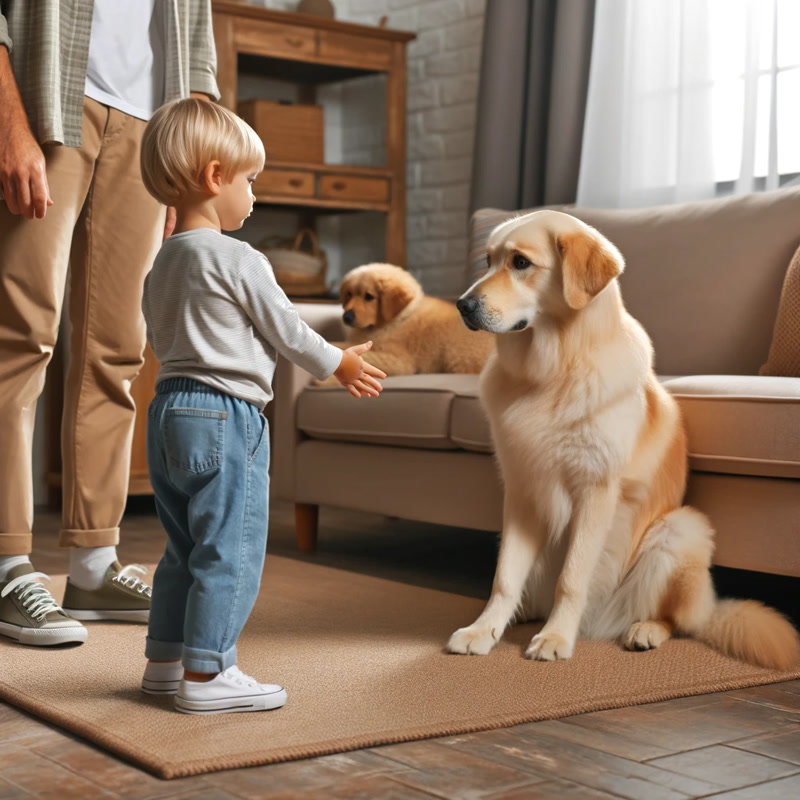
Key Strategies for a Smooth Introduction
When welcoming a new dog into your home, especially in a setting with other pets, it’s crucial to manage the introduction with care.
Utilizing a leash during initial encounters is a wise strategy to maintain control and ensure safety for all parties involved.
Welcoming Your Dog into a Child-Inclusive Home
Preparing Your Children for the New Arrival
Educating your children on appropriate behavior around the new dog is a vital step.
Teach them to allow the dog to approach first and to interact gently, avoiding sudden movements or loud noises.
First Meeting: A Controlled Approach

Initiate the introduction in a calm environment, with the dog leashed.
Encourage your children to interact gently, offering treats and toys to foster positive associations.
Supervision is Key
Always supervise interactions between your new dog and children.
Even the friendliest dogs can react unexpectedly, so close monitoring is necessary until you’re confident they can interact safely.
Establishing Boundaries
Help your children understand the importance of respecting the dog’s personal space and recognizing signs of discomfort, promoting a respectful and safe relationship.
Integrating Your Dog with Other Canine Family Members
Neutral Ground for First Impressions
For the first meeting with an existing dog, choose a neutral location like a park.
Keep both dogs on leashes, allowing them to get accustomed to each other’s presence through parallel walking and controlled face-to-face interactions.
Supervised Time Together
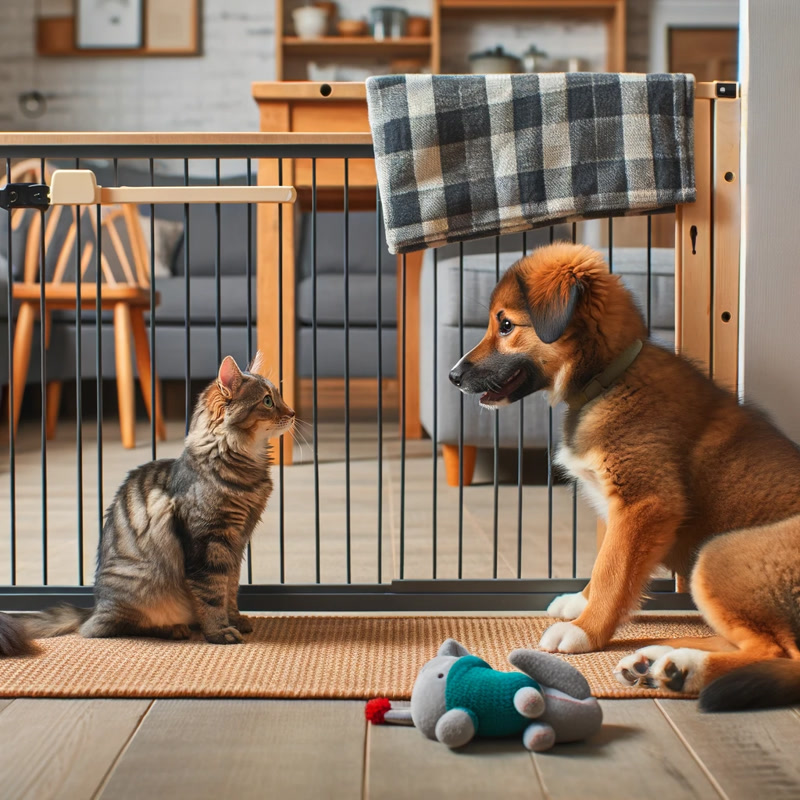
Gradually increase their time together in a controlled environment, watching for any signs of aggression or discomfort, and be ready to intervene if necessary.
Introducing Your Dog to Cats
The Scent Introduction
Start by familiarizing your dog and cat with each other’s scent through exchanged bedding or toys, paving the way for a smoother physical introduction.
Separated Yet Aware
Maintain separate spaces for your dog and cat initially, allowing them to adjust to each other’s presence without direct contact.
Visual Introduction Followed by Controlled Interactions
Use barriers like baby gates for visual introductions, followed by closely supervised interactions.
Reward both pets for calm and positive behavior.
Gradual Face-to-Face Meetings
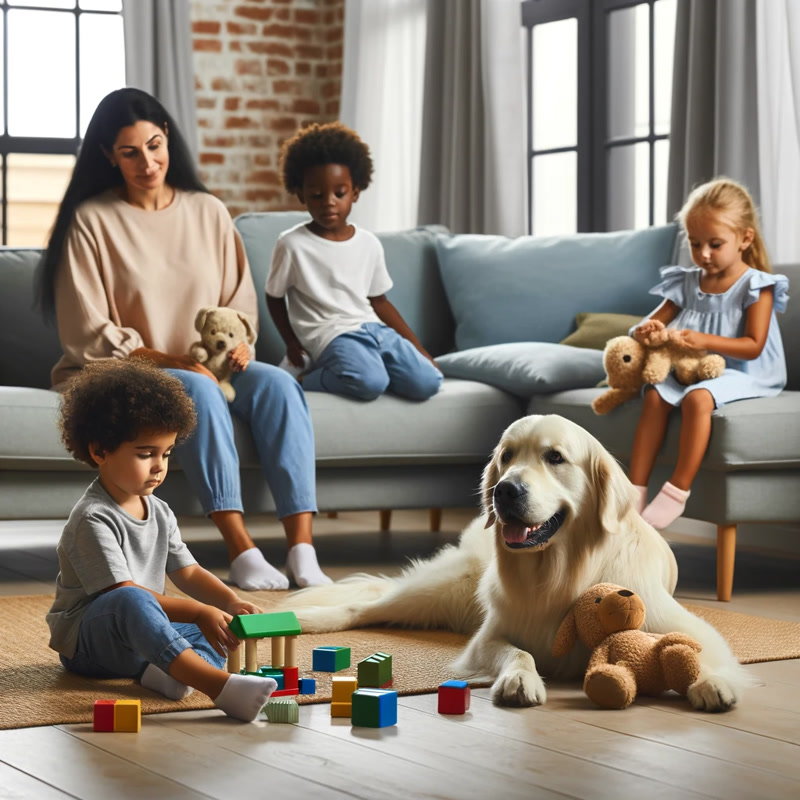
Progress to brief, controlled face-to-face meetings, keeping the dog leashed.
Look for signs of stress or aggression, and separate them if necessary.
Safety Measures and High Retreats for Cats
Ensure your cat has access to high places for safety and provide separate feeding and litter areas to avoid conflicts.
Patience and Persistence
Understand that some animals may take longer to adjust. Be patient and let them set the pace of their interactions, using positive reinforcement throughout.
Bonus Tips for Successful Dog Introductions

- Maintain a Calm Environment: Keep your home peaceful to reduce anxiety and facilitate better introductions.
- Individual Attention: Give each pet individual time to prevent jealousy and strengthen bonds.
- Seek Professional Advice: Consult a dog trainer or animal behaviorist for personalized guidance.
- Positive Reinforcement: Use rewards to encourage good behavior during these stressful times.
- Observe Body Language: Pay close attention to your dog’s body language for signs of discomfort or readiness to interact.
By following these detailed steps and maintaining patience, you can foster a loving and harmonious environment for all your family members, furry or otherwise.
Remember, each pet is unique, and adapting the process to their individual personalities and experiences is key to successful integration.

